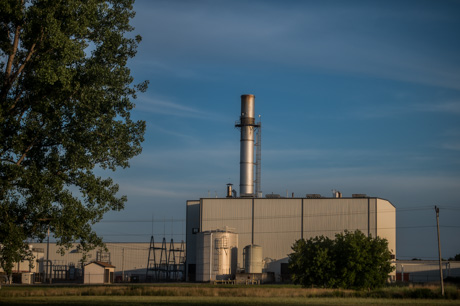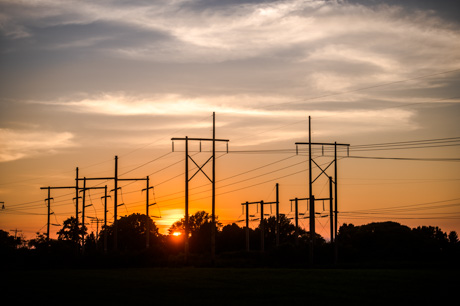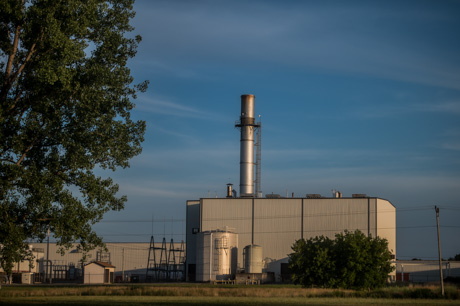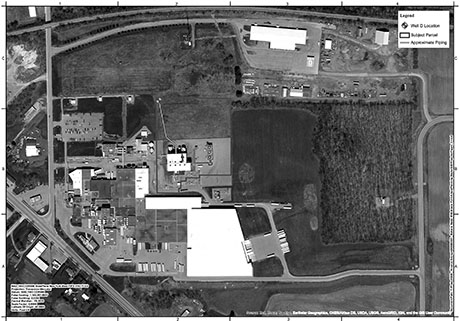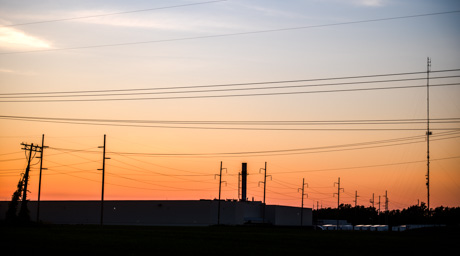Updates on city water issues: contesting a well use, lead waterline survey, expansion delay

Photo by Howard Owens
If you haven’t heard or been paying attention, there's been increased focus on water in Genesee County, from drought in some areas causing residents to drive several miles to haul water to their homes and a $150 million Phase 3 water project being mapped out for funding and the physical work, to appeals for citizens to use water judiciously in the face of potential shortages.
The city fire department had to curtail its hydrant flushing this week due to hot temperatures to conserve water.
City management is dealing with other issues as well, which have been dragging on for the last two years. Here are a few updates:
Seneca Power Partners sought to draw water from a city well, while both Seneca and city management argued their cases to the New York State Department of Environmental Conservation in 2022. City Manager Rachael Tabelski said the case is still ongoing.
After a more than four-month review process of paperwork and supporting documentation from the applicant, Seneca Power Partners, and from city, town and county management and legal sources, the DEC has opted to grant Seneca a permit to “add Well D at the Batavia Well Field as a new permanent source of water supply.”
The permit has been granted for five years, with the option for Seneca Power Partners to reapply when that time is up.
“We have the same concerns we had when we issued the letters of concern (in July),” Tabelski said. “We outlined our concerns to the DEC, and we will meet with DPW and our legal counsel to determine the next steps.”
At the time, Tabelski wasn't quite certain how the DEC arrived at its decision, given some confusing supporting information.
“It is my understanding that Seneca Powers’ Application with the NYS DEC to draw water directly from the aquifer is still under review,” she said. “The city, county and town of Batavia continue to work together to prevent this draw of water because the aquifer is a historical low. The aquifer is the city’s primary drinking source of water, which must be protected. Depending on the demand of water and the termperatures we could see shortages in water for customers, and we encourage water users to continue conservation techniques.”
In short, the permit authorizes the withdrawal of up to 698,400 gallons per day, or a total of 26 million gallons per year of water for the purpose of system maintenance, boiler make-up water, and non-contact cooling to support the generation of electric power in accordance with the terms and conditions of this permit. Water will be withdrawn from a new groundwater supply, Well D, located at the Batavia Power Plant.
Given the tenuous condition of the city’s and county’s water supply — with the county issuing similar appeals to taper water usage each summer — The Batavian asked if the city has or is formulating a plan to counteract future potential water shortages.
“The City purchases water from the county but we see ourselves as a partner to the water issues that the county is facing. We work constantly to assist the county with projects at the Water Treatment Plant to increase water production closer to the permitted level at the plant," Tabelski said. "Over $4 million has been invested in the last four years to make improvements at the Water Plant.
“In 2022, a WIIA (water infrastructure improvement) grant was secured by the City and County to complete these projects. At this time, the Batavia Water Plant produces water and services the entire center region of Genesee County."
The Batavian had also asked about the status of the lead survey, however, City Council approved another measure toward this goal during Monday’s business meeting to identify lead water lines in homes.
As a result of a recently passed Lead and Copper Rule, the city will inventory 400 water service lines throughout the city to determine where any lead lines are located. The city issued a request for a proposal to conduct the inventory and made water meter replacements were needed, Water and Wastewater Superintendent Tom Phelps said during Monday’s meeting.
Out of five company bids, a decision was made not to proceed with replacing the meters due to the cost of completing the project, he said. Electro Scan Inc. was the lowest bidder for the inventory portion, coming in at $375,000. The project is scheduled for completion by the end of September, he said.
“We will not be using an intern for this project as the timeline for the Lead and Copper Rule Planning is due in October. Once we have this data collected, the city will be able to use predictive modeling to gain more insight into the actual number of lead lines and prepare our plans for replacement,” Tabelski said. “Currently, we have 28 public sector lines identified as lead, 4,054 unknown, and 0 residential/commercial lines identified as lead, with 5,645 unknown. We need assistance from the community to help us identify lead lines and funding to start replacement.
"A video was recently released to the school district, and we continue to encourage residents and building owners to fill out our survey online that feeds directly into the City’s GIS system for identification, which can be found here: https://survey123.arcgis.com/share/40d14e33590842a088144a45cb1eee6c .”
On a related note, a $120 million expansion project at HP Hood was temporarily halted by the city earlier this year because the town of Batavia had been exceeding its wastewater limits and related wastewater facility agreement. That remains on hold, Tabelski said.
“The City continues to remain hopeful regarding the finalization of the updated Wastewater Facility Agreement with the Town of Batavia. Once the agreement is executed the city will rescind the SEQR challenge to the Hood project specific to the town’s sewer capacity,” she said. “It’s vitally important, fair, and equitable for both city and town residents that the agreement reflects the town’s current usage of sewer and that the percent of town usage is purchased via a capacity purchase agreement.
“Once the agreement is executed, both the town and city have agreed and look forward to moving forward with an expansion study of the Wastewater Treatment Plant for the potential for increased capacity,” she said.
Tabelski sent the town Planning Board a letter on March 13 notifying the group that the city had not been informed in a timely manner that the town had been established as lead agency for the proposed expansion of process lines at HP Hood on Feb. 13, 2024, and the city did not receive word of that until March 4. The city, therefore, objects to the town acting as the lead agency, Tabelski said.
In addition, ”due to violations of the town’s contracted wastewater capacity limit, the project cannot proceed,” Tabelski said in the letter.

